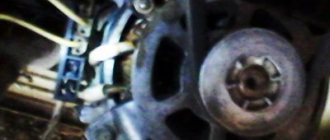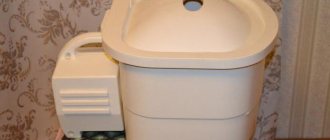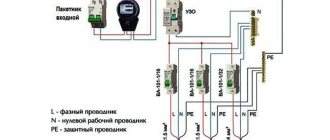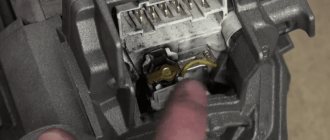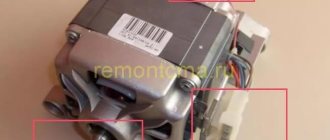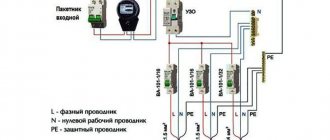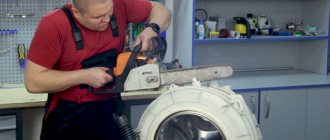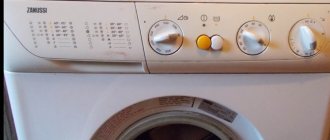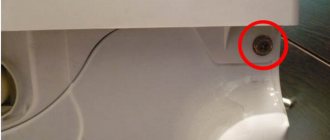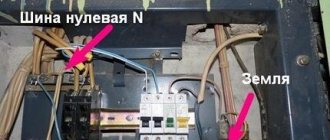Looking at the compact and simple in design Malyutka washing machine, it is difficult to believe that there is a very powerful engine inside it. The manufacturer managed to equip it with a rather large motor, which even had to be placed in a separate housing. But large size is not its only feature. This motor is also known for its highest reliability, as it can serve for many years without accidents. We invite you to take a closer look at the characteristics of the Malyutka washing machine engine and evaluate its advantages and potential.
What can an engine from an old washing machine look like?
If you are planning to make homemade products from a used engine, you need to figure out what it is and what it is capable of. In washing machines you can find three types of motors: asynchronous, brushless and commutated. Let's take a closer look at them:
- Asynchronous - can be two-phase or three-phase. Two-phase engines are found in older Soviet-made models. More modern machines are equipped with three-phase. The design of such an engine is extremely simple; it can reach speeds of up to 2800 rpm. The working engine removed from the machine just needs to be lubricated - and it is ready for new exploits.
Such motors are characterized by quiet operation. Their only drawback is their impressive dimensions.
- Commutator – you will find this type of motor in the design of most household appliances. Such devices can operate from direct and alternating current, have compact dimensions and a controlled speed. The only drawback of such an engine is the brushes that wear out, but these parts can be replaced if necessary.
It must be admitted that, in comparison with an asynchronous motor, such a motor is noisier. In addition, it often overheats and even sparks
- Brushless direct drive is the most modern motor from the Korean manufacturer. You will find it in modern washing machines from LG and Samsung.
Such models are the most compact. They are characterized by wear resistance, simplicity of design and high efficiency.
Now that you can determine the type of motor, all that remains is to decide where you can use the motor from the washing machine.
Popular models
Today, not many companies are engaged in the production of “Malyutka” type machines, which is due to the low demand for these products. However, some manufacturers not only do not stop producing mini-units, but also equip them with additional functions, such as heating and spinning.
Below are the most famous samples, reviews of which are most often found on the Internet.
- The Agat machine from the Ukrainian manufacturer weighs only 7 kg and is equipped with a 370 W motor. The wash timer has a range from 1 to 15 minutes, and the activator, located at the bottom of the case, is equipped with reverse. “Agat” is characterized by low energy consumption and belongs to class “A++”. The model is available in dimensions of 45x45x50 cm, holds 3 kg of laundry and is not too noisy.
- The “Kharkovchanka SM-1M” model from NPO “Electrotyazhmash”, Kharkov, is a compact unit with a non-removable lid and a timer. A distinctive feature of the model is the location of the engine, which is located on top of the body; in most samples it is located at the junction of the rear walls of the tank. This design makes the machine even more compact, allowing it to be used in small spaces.
- The activator machine “Fairy SM-2” from the Votkinsk Machine-Building Plant weighs 14 kg and is produced in dimensions of 45x44x47 cm. The tank can hold up to 2 kg of dirty laundry, which is quite enough to serve one or two people. The body of the product is made of high-quality white plastic, the power of the electric motor is 300 W.
- The model with the heating function “Fairy-2P” is equipped with an electric heating element, which maintains the desired water temperature throughout the entire wash cycle. The body of the product is made of high-strength plastic, and the internal tank is made of composite polymers. The weight of the unit is 15 kg, the maximum load of laundry is 2 kg, electricity consumption is 0.3 kW/h. Options include liquid (foam) level control and half-load mode.
- The Malyutka-2 machine (021) is a miniature device and is designed to load 1 kg of laundry. The volume of the washing tank is 27 liters, the weight of the unit including packaging does not exceed 10 kg. The model will be an ideal option for a student living in a dormitory or a summer resident.
- The “Princess SM-1 Blue” model is produced in a blue translucent case and is distinguished by its small dimensions of 44x34x36 cm. The machine is equipped with a timer with an operating time of up to 15 minutes, can hold 1 kg of dry laundry and is filled through a hose. The product is equipped with rubberized legs and a carrying handle, consumes 140 W and weighs 5 kg. The machine is equipped with reverse and has a 1-year warranty.
- The Rolsen WVL-300S mini spinning machine can hold up to 3 kg of dry laundry, has a mechanical control and is available in dimensions of 37x37x51 cm. Spinning is performed using a centrifuge, which is installed in the tank and can rotate at a speed of 300 rpm. The disadvantages of the model include the relatively high noise level, reaching 58 dB, and the duration of the washing process.
We properly disassemble and decide what can be made from parts of an old washing machine
Disassembling a washing machine is a leisurely task. After working with water, a salt build-up may remain on the parts; it must be carefully removed so as not to damage the parts during removal. What can be made from an old washing machine? A motor will be useful for homemade projects - it will become the basis for many devices. The drum will also come into play. It is usually made of stainless steel. All pipes must be disconnected from the drum. A loading hatch may also be useful. In addition to these parts, do not rush to throw away springs, counterweights and body parts.
For those who are versed in electronics, you may need a circuit board - it can easily be used to find spare parts for repair work if necessary.
Homemade concrete mixer
If you have started a small renovation that requires, for example, plastering the walls, a concrete mixer will come in handy. Once again, washing machine parts will come in handy.
As a result, you will receive a compact device with low power, which you won’t mind throwing away after the repair work is completed.
As a container for concrete, you can use the same drum with pre-sealed holes for draining water. It is best to use parts from a front-loading machine; there will be almost nothing to redo. To strengthen the body, use a metal corner, and for convenient movement of the concrete mixer, equip it with wheels. The main difficulty in the design is the manufacture of a “swing” for the correct tilt and subsequent pouring of concrete. How to do it correctly in the video:
How to make a sharpener or grinding device from a washing machine engine
A sharpener is one of the most popular tools for the home. It can be used to sharpen garden tools, household knives and scissors. If you don’t already have one, buy it at any tool store or make a sharpening machine from a washing machine. The most difficult part is how to attach the sanding wheel to the motor. The easiest way is to buy a ready-made flange. It looks something like this.
Flange for motor
You can machine a flange from a metal pipe of a suitable diameter; most often, a tube with a cross-section of 32 mm is suitable. You need to cut a piece 15 centimeters long from it, this is quite enough to fix the emery. The flange is secured to the motor shaft by welding or a through bolt. The video describes in detail how a homemade washing machine sharpener works:
Washing machines "Malyutka": characteristics, design and tips for use
The Malyutka washing machine is well known to Russian consumers and was quite popular in Soviet times. Today, against the background of the emergence of a new generation of automatic washing machines, interest in mini-units has noticeably decreased. However, there are circumstances in which buying a large car is impossible, and then miniature “Baby” cars come to the rescue. They cope well with their responsibilities and are quite in demand among owners of small-sized housing, summer residents and students.
Making a wood lathe from a washing machine
What else can you do with the washing machine motor? One popular idea is a wood lathe. Let's look at the step-by-step process.
| Illustration | Description of action |
| To firmly fix the engine on the workbench, make fasteners from a metal angle. To do this, drill holes for fixing to the motor legs and table. | |
| To fasten a wooden part, you will need a flange fixed to the motor shaft, and these are the studs made from ordinary bolts with cut off heads. Screw these pins into the base. You will need 3 studs. | |
| The motor is fixed to the table with self-tapping screws and to the metal part with bolts. | |
| The opposite end of the wooden part is attached with such a device. It consists of a screw with a loop, two wooden stands perpendicularly fixed to the corners. | |
| This wooden part must be movable so that different workpieces can be used. For mobility, it is mounted on a threaded stud with bolts. | |
| To control the motor you will need a power supply. You can use one of the computer units. You will need to install switches to adjust the rotation speed. | |
| How to connect a motor to a power supply in animation. | |
| To guide your tools, make a tool rest. It consists of two wooden parts and a metal corner. All parts are movable due to fastening with one bolt. | |
| The lower part of the tool rest is rigidly fixed on the workbench using self-tapping screws and corners. | |
| The workpiece is fixed on the machine on both sides: on the left - on studs, on the right - on a bolt with a handle. To fix it in the workpiece, you need to drill the corresponding holes. | |
| To work, you will need sharpened tools - cutters. | |
| Final sanding of the workpiece is done using a strip of sandpaper. |
How to make a simple feather removal machine for home use from a washing machine with your own hands
The time of slaughtering a bird is a troublesome stage. This is usually done in the fall, when the ducks and broilers have reached the desired weight, and it is no longer profitable to keep them in the winter. You need to pluck several dozen or even hundreds of carcasses very quickly. You can get rid of hard labor with the help of a feather removal machine, and it’s easy to do everything from the same parts of the washing machine.
The only thing that can cause difficulties is the search for rubber fingers with threads - beaters. You will have to order them, so keep in mind that you need to think about making the machine long before slaughter
The device does not require disassembling the washing machine. It is especially convenient to use machines with vertical loading. You just need to fix the beats in the drum so that they point inward. Before plucking, the chicken carcass must be scalded with boiling water and then simply thrown into a rotating drum. Here's what happens:
Important! To prevent water from getting on the engine of the feather removal machine, you need to protect it with a plastic casing.
And the last point - the feather removal device must be firmly fixed, since the vibration when loading the carcass will be very strong.
DIY repair
Despite the simple design and the absence of complex components, “Baby” washing machines sometimes fail. If an electric motor breaks down, it is unlikely that you will be able to repair the unit yourself, but it is quite possible to eliminate a leak, solve a problem with the activator, or change the oil seal on your own. To do this, you need to learn how to disassemble the machine and adhere to a certain repair scheme.
Disassembly
Before any repairs, the unit is disconnected from the network and placed on a flat, well-lit surface. Before disassembling the machine, experts recommend waiting 5-7 minutes so that the capacitor has time to discharge. Then remove the plug from the hole located on the back side of the motor casing, align the hole in the impeller with the hole in the casing and insert a screwdriver through it into the engine rotor.
The activator is carefully unscrewed, after which the tank is disconnected. Next, unscrew 6 screws, remove the flange and unscrew the locknut and rubber nut that secure the switch.
Then remove the washers and unscrew the screws holding the casing halves together. These parts are carefully removed to gain access to the electric motor and other equipment.
Repairing the activator
One of the common problems with the activator is a violation of its mobility, and, as a result, stopping the washing process. This can happen from overloading the tank, as a result of which the engine starts to run at high speeds, the machine hums, and the blades stand still. To eliminate this problem, it is enough to unload the tank and give the motor a rest, while in more serious cases, disassembling the activator is required. A common reason for the impeller stopping is threads and rags wrapping around the shaft. To eliminate the malfunction, the activator is removed and the shaft is cleaned of foreign objects.
A misalignment of the activator can also become a serious problem in which, although it continues to spin, it strongly wrinkles and even tears the laundry.
At the same time, the machine makes a strong hum and may periodically turn off. To solve the problem of misalignment, the activator is removed and the thread is cleaned, after which it is reinstalled in place, controlling its position.
Fixing a leak
Leaks also sometimes occur when using “Malyutki” and cause unpleasant consequences. Leaking water can reach the electric motor and cause a short circuit and even an electric shock. Therefore, if a leak is detected, you must immediately take measures to eliminate it, without ignoring the problem. You need to start by finding the location of the leak: usually it turns out to be a flange assembly or a large o-ring. To do this, the machine is partially disassembled and the rubber is inspected for damage. If defects are detected, the part is replaced with a new one.
If the large ring is in order and water continues to flow, then disassemble the casing and remove the flange assembly. Then it is disassembled and the rubber bushing and small spring ring are inspected, which sometimes does not compress the cuff too well. If necessary, it is replaced with a tighter one or bent.
Pay attention to the small o-ring, although it does not leak as often. Hose fittings can also leak. In this case, you need to remove the worn element and install a new one.
Replacing oil seals
The oil seal is located between the tank and the engine, and a leak may indicate the need to replace it. Usually the oil seal is changed together with the activator, since often its sleeve is literally torn by the thread into which the shaft is screwed. The new node is installed in place, then a test connection is made.
If the electric motor fails, there is no point in repairing it, since the cost of repairing it is comparable to buying a new Malyutka. Fortunately, engines do not break down too often and, if operating rules are followed, they can last 10 years or more.
Source
Lawnmower from a used motor
We continue to look for the answer to the question of where we can use the motor from an automatic washing machine. Another original idea is making a lawn mower. For a small area, an electric model connected to a power source with a cord is quite sufficient. The design of such a unit is very simple. You will need to make a platform on four wheels with a small diameter.
The platform can be made of metal or OSB board, plywood and even the body of the same washing machine
The engine is fixed on top of the platform, the shaft is threaded into the hole below, and the knife is attached to it. All that remains is to attach handles and a lever to the cart to turn the power on and off. If you have an asynchronous motor lying around, you will be surprised at how quiet the unit will be, even compared to factory models.
Advice! To prevent grass from wrapping around the knives, you need to slightly bend their cutting edges down.
Video: how to make a lawn mower
How to build a generator from an old washing machine
We continue to look at homemade products from a washing machine motor, and the turn has come to the generator. You won't be able to assemble a powerful device, but in the event of an emergency shutdown, you can be well prepared. To turn the engine into a generator, you will have to disassemble it and partially cut off the core. In the remaining part of the core you need to make grooves for neodymium magnets.
The magnets must be placed in two rows with the same spacing
The gaps between the magnets are filled by cold welding. To operate the device, the kit must include a motorcycle battery, a rectifier and a charge controller. Details of the work in the video:
Homemade products from a washing machine engine: circular saw
You will be surprised, but a circular machine can also be built based on the motor from a washing machine. An important point in this matter is the additional equipment of the motor with a device that regulates speed. Without this additional module, the circular machine will work unevenly and simply will not cope with the task. Device assembly diagram:
Circular saw diagram
The principle of operation of the device is simple: the engine drives a shaft on which a small pulley is mounted. From the small pulley there is a drive belt to a large pulley with a circular saw.
Important! When working with a homemade circular saw, take care of your hands. All structural parts must be firmly fixed.
The resulting unit will not be very powerful, so it can only be used for cutting boards up to 5 cm thick. How this homemade circular saw works:
Criterias of choice
When choosing an activator machine of the “Baby” type, it is necessary to take into account a number of points.
- If the unit is purchased for a family with a small child, then it is better to choose a model with a spin function. Such models can hold up to 3 kg of laundry, which is quite enough for washing children's clothes. In addition, spinning helps clothes dry quickly, which is quite important for young mothers.
- When choosing a machine for one person living in a hostel or rented accommodation, you can limit yourself to miniature models with a load of 1-2 kg. Such machines are very economical and do not take up much space.
- If the machine is bought for a summer residence, then the spin function can be neglected, since clothes can be dried in the open air. For such cases, a unit with a water heating function is ideal, which will greatly facilitate washing at your dacha.
- If the “Malyutka” is purchased as the main washing machine for constant use, then it is better to choose a model with reverse. Such units do not tear the laundry and wash it more evenly. In addition, the main task of a home machine is to accommodate as many things as possible, including quite large ones (blankets, bed linen), and therefore it is advisable to choose a unit with a large tank, designed for at least 4 kg of laundry.
What else can be made from a washing machine drum: original decor ideas
The drum with its correct perforation is a material for the manufacture of decorative objects. Here are some interesting ideas.
Ottoman with drum base. It’s easy to do – you just need to attach the wheeled legs and make a soft seat
Such a drum can also be turned into an original lamp. If you place a lamp inside, the perforated surface of the drum will cast glare on the walls. Such lamps will look good on the ceiling of the veranda or even on the floor
Bedside tables and tables. Drums with doors from top-loading machines can be used to hide small items.
This is how the drum turns into a cabinet or nightstand
Making a barbecue from a drum from a washing machine, photo examples
A metal grill is a temporary product. Sooner or later it burns out and requires replacement. You can buy a new one each time or use improvised material, for example, a drum from a washing machine. Making this craft from a washing machine drum takes a couple of minutes. The beauty is that oxygen easily enters the perforated container, which causes active combustion.
Kebab coals burn quickly, and the process of cooking meat is significantly accelerated
The metal of the drum can withstand a couple of seasons. Make a comfortable stand for it so you don’t have to bend over, and you’re done. Standard length skewers will fit comfortably on a small roasting pan. If necessary, you can lightly weld a couple of guides.
How to make a good smokehouse from a washing machine drum
The icing on the cake in our matter is the smokehouse. Fragrant smoked meat, lard and fish - what could be better for the table? If you have a tank from a top-loading machine lying around in your shed or garage, consider it a done deal.
It is necessary to cut a hole in the bottom of the tank for the firebox, and weld fasteners inside for hanging food. All that remains is to install the tank on the fireplace, hang the fish or lard, cover the top of the tank with a lid and light the sawdust.
Products need to be smoked for several hours until cooked
It is important that the fuel under the smokehouse smolders and does not burn. It is better to place such a device away from home.
Important! You'll have to keep an eye on this smokehouse. It should not be left for a long time, the fire may flare up, and instead of a smoked product you will get a burnt product.
We hope we have convinced you that you should not scrap your old washing machine.
Its parts can be used to create so many useful things for your home! If you have experience in making such homemade products or can suggest something tonal - write in the comments!
Save time: selected articles delivered to your inbox every week
Homemade products from a washing machine and engine
Therefore, if you have an old Riga, Malyutka washing machine lying around idle, or perhaps even something newer, such as an automatic machine, then do not rush to get rid of this household appliance.
How to use it correctly?
The operation of activator machines of the “Malyutka” type is very simple and does not cause difficulties. The main thing is to follow the rules for using the unit, without neglecting safety precautions.
- If the machine has just been brought in from the balcony in the cold season, then you cannot turn it on right away. The engine must warm up to room temperature, which usually takes 3-4 hours.
- It is impossible to install the unit close to the wall - it is better to place the machine at a distance of 5-10 cm. This will prevent increased noise associated with vibration of the equipment.
- If the model does not have a drain hose , then it should be placed on a wooden grate or stool installed in the bathtub. For greater stability and reduced vibration, it is advisable to place a rubberized mat under the bottom of the car. In this case, the unit must stand very level and rest on the base with the entire surface of the bottom.
- To prevent splashes from getting on the engine, it is recommended to cover the casing with polyethylene without covering the ventilation holes.
- The drain hose should be fixed to the body of the machine with the edge at the top, and only then should you start drawing water.
- After the hot water has reached the required level, powder is poured into the tank, the laundry is laid, the machine is connected to the network, and then the timer is started. The water temperature for cotton and linen fabrics should not exceed 80 degrees, for silk - 60 degrees, and for viscose and woolen products - 40 degrees. To avoid staining, white items should be washed separately from colored items.
- Between loads of laundry, the machine should rest for at least 3 minutes.
- After the laundry is washed, the unit is disconnected from the network, the hose is lowered down, the water is drained, and then the tank is rinsed. After this, pour clean water with a temperature of up to 40 degrees, lay out the laundry, plug in the machine and start the timer for 2-3 minutes. If the design of the machine provides for spinning, then the laundry is wrung out in a centrifuge, then hung out to dry. The machine is disconnected from the power supply, washed and wiped dry with a clean cloth.
An overview of using the washing machine is presented in the video.
When using the “Malyutka”, you must remember the safety rules.
- Do not leave the device unattended or allow small children to access it.
- Do not heat the water in the tank using a boiler or handle the plug and cord with wet hands.
- When washing, do not place the machine on bare ground or a metal floor.
- It is prohibited to move the machine connected to the network and filled with water. And also, you must not simultaneously touch the body of the unit and grounded objects - heating radiators or water pipes.
- Do not allow the plastic parts of the unit to interact with acetone-containing substances and dichloroethane, and also place the machine in close proximity to open fire and heating devices.
- “Malyutka” should be stored at a temperature not lower than +5 degrees and a relative air humidity not higher than 80%, as well as in the absence of acid vapors and other substances that negatively affect plastic.
What homemade products can you make from a washing machine?
A washing machine consists of various components and mechanisms. The most valuable for making homemade products and crafts are:
From the engine of a washing machine you can make a sharpening machine, as well as a machine for polishing discs, a small circular saw, a lawn mower, and many other homemade products.
The drum of the washing machine can be adapted to accommodate a small stove, mini smokehouse or outdoor firewood. In general, there are more than enough ideas on this topic. What can be made from a washing machine will be discussed in this article from the construction magazine samastroyka.ru.
Smokehouse from a washing machine Riga
Using an old Riga washing machine to make a smokehouse, you won’t have to redo much. Here you can go in two ways: use the entire washing machine after first removing all parts from it that could melt, or adapt only one drum for the smokehouse.
